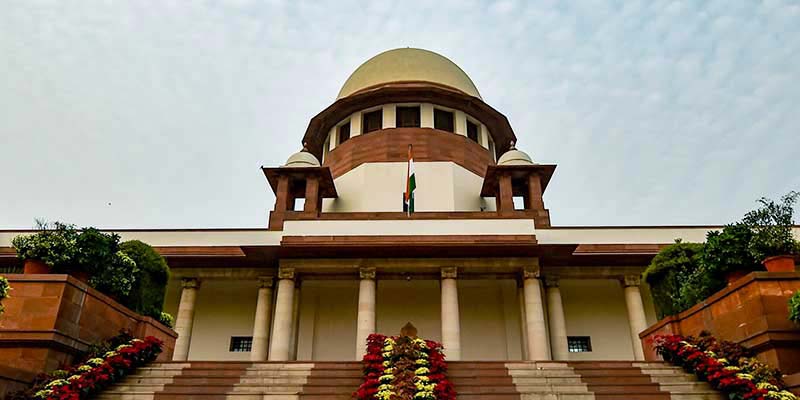- India
- Aug 19
How are judges appointed in the Supreme Court?
• The Supreme Court officially announced that its collegium has recommended to the Centre nine names, including three women high court judges, for appointing them as judges of the apex court.
• The recommendation by the Supreme Court’s five-member collegium headed by Chief Justice of India N.V. Ramana at its meeting puts an end to the 21-month-long logjam over appointment of new judges to the apex court.
The names recommended by the collegium are:
• Justice Abhay Shreeniwas Oka (Chief Justice of Karnataka High Court)
• Justice Vikram Nath (Chief Justice of Gujarat High Court)
• Justice Jitendra Kumar Maheshwari (Chief Justice of Sikkim High Court)
• Justice Hima Kohli (Chief Justice of Telangana High Court)
• Justice B.V. Nagarathna (Karnataka High Court)
• Justice C.T. Ravikumar (Kerala High Court)
• Justice M.M. Sundresh (Madras High Court)
• Justice Bela Trivedi (Gujarat High Court)
• P.S. Narasimha (senior advocate).
• Narasimha, whose name if cleared, would become the sixth lawyer to be elevated to the apex court bench directly from the Bar. He was appointed Additional Solicitor General in 2014 and resigned from the post in 2018.
• The five-member collegium also comprises Justices U.U. Lalit, A.M. Khanwilkar, D.Y. Chandrachud and L. Nageswara Rao.
• The recommendations have to be cleared by the Centre.
• The impasse over the appointment has led to a situation in which not a single name for the judgeship in the apex court could be recommended after the superannuation of the then CJI Ranjan Gogoi on November 17, 2019.
• With the retirement of Justice Navin Sinha on August 18, the strength of judges in the top court has come down to 24 as against the sanctioned strength of 34, including the CJI.
• The recommendations, if accepted, will fill nine vacancies taking the working strength to 33. The vacancy created due to the superannuation of Justice Sinha would remain for the time being.
Collegium recommends three women judges
• The collegium has recommended three women judges for appointment to the Supreme Court.
• The apex court, which came into being on January 26, 1950, has seen very few women judges since its inception and in the last over 71 years has appointed only eight women judges starting from M. Fathima Beevi in 1989.
• Presently, Justice Indira Banerjee is the lone serving woman judge in the apex court after her elevation on August 7, 2018 from the Madras High Court where she was serving as the Chief Justice. Justice Banerjee would demit office on September 23 next year.
What is the collegium system?
• The collegium system is a forum including the CJI and four senior-most judges of the SC, which recommends appointments and transfers of judges. Judges of the higher judiciary are appointed only through the collegium system, and the government has a role only after names have been decided by the collegium.
Appointment of SC judges
• The CJI and judges of the Supreme Court are appointed by the President under clause (2) of Article 124 of the Constitution.
• Whenever a vacancy is expected to arise in the office of a judge of the Supreme Court, the CJI will initiate a proposal and forward his recommendation to the law minister to fill up the vacancy.
• The opinion of the CJI for appointment of a judge of the Supreme Court should be formed in consultation with a collegium of the four senior-most judges of the apex court.
• The opinion of members of the collegium in respect of each of the recommendations as well as the senior-most judge in the Supreme Court from the High Court from which a prospective candidate comes, would be made in writing. The CJI must transmit his opinion as also the opinion of all concerned to the government of India as part of record.
• After receipt of the final recommendation of the CJI, the law minister will put up the recommendations to the Prime Minister, who will advise the President in the matter of appointment.
Manorama Yearbook app is now available on Google Play Store and iOS App Store

